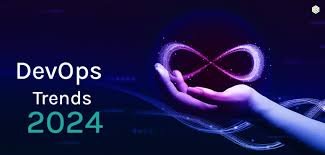For 2024, cloud and DevOps are centered on intelligence and developer empowerment. Artificial intelligence is penetrating operations (AIOps), with tools predicting outages and automating incident response. According to recent research, AI is now used significantly in most organizations’ software practices. Early experiments show AI aiding in logging anomaly detection and automated remediation, improving overall uptime.
Another standout trend is platform engineering. Companies are formalizing internal developer platforms that offer self-service deployments, standardized libraries, and unified tooling. The 2024 State of DevOps report found that well-executed platform engineering leads to major productivity boosts, especially in larger enterprises. (It advised smaller teams to weigh complexity, but large orgs see clear gains.)
Key Trends:
- AIOps and Automation: AI is applied to monitor infrastructure, triage alerts, and even optimize costs. For example, machine learning models might predict cloud capacity needs or automatically provision resources. Developers use AI assistants (like ChatGPT for code) as part of their workflow, continuing the trend of intelligent development aids.
- Platform Engineering: Internal platforms (developer portals, shared CI/CD pipelines) become common. These platforms abstract away cloud complexity, giving teams a curated environment for deployments. Firms that invest here see significantly faster delivery and fewer environment-specific issues.
- GitOps & Declarative Ops: Managing infrastructure via Git continues to grow. GitOps tools (Argo CD, Flux) enable teams to declaratively define cloud state and automatically reconcile it. This ensures that what’s in version control is what runs in production.
- Service Mesh and Zero-Trust: Advanced networking layers like Istio provide fine-grained routing and security between microservices. Zero-trust models enforce strict identity for every service call, reflecting a mature security posture in DevOps.
- Observability as Code: Teams treat observability (logs, traces) like code. Configuring monitoring and alerting via code allows consistent setup across environments. Automatic baselining and anomaly detection reduce alert fatigue.
- Green DevOps: Sustainability enters the mix – teams measure and optimize the carbon footprint of their development practices (e.g. turning off unused resources, choosing energy-efficient regions).
In 2024, success in the cloud/DevOps space means smarter operations and better developer experience. By integrating AI into tooling and providing robust developer platforms, organizations speed up innovation while maintaining control and security. Early adopters of these trends report both faster time-to-market and higher team satisfaction – a clear competitive edge in a dynamic IT landscape.


